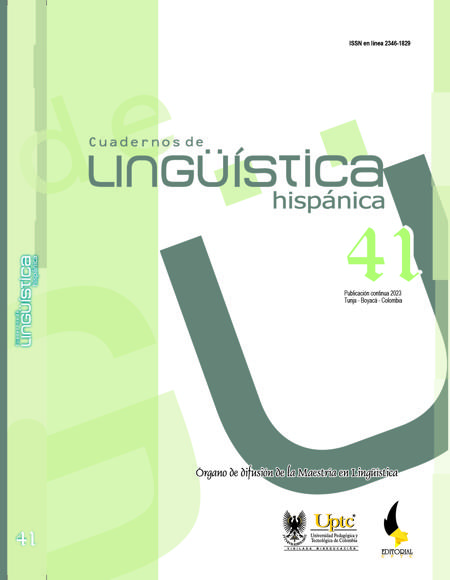The Oral Language Represented in the Colombian Comic Strip Copetín

Abstract
This article studies the representation of oral language used in the Colombian comic strip Copetín by the Bogotá cartoonist Ernesto Franco, which has the staging of street children as its particularity. The corpus made up of 4807 strips is analyzed taking into account morphology, phonology, phonetics, and other extralinguistic elements such as the representation of insults and the use of typographical signs; For this, each representative element of the registry of street children has been taken. It was found that the linguistic register used by the author corresponds to the register of street children and “cachaquismos.”1 In this way, it has been possible to inquire, for example, about the origin of certain phonological phenomena and the formation of certain expressions typical of the Bogotá variant of Spanish. This is how this study, one of the first to combine language analysis and comics, aims to open the doors to other similar studies since there are still other elements to be analyzed.
Keywords
Copetín, Ernesto Franco, street children, represented spoken language
References
- Ariza, M. (2012). Fonología y fonética históricas del español. Arco Libros.
- Bedel, J. M. (2010). Grammaire de l’espagnol moderne (5e éd.). PUF.
- Borda, A. (2009). Cachacario: Diccionario de cachaquismos. Punto Aparte.
- Castañeda, L. (2005). Procedimientos morfológicos en la creación y transformaciónléxica del parlache. Ikala, Revista de Lenguaje y Cultura (10), 245-277.
- Cuervo, R. J. (2012). Apuntaciones críticas sobre el lenguaje bogotano. Instituto Caro y Cuervo. (Obra original publicada en 1867).
- Darbord, B. & Pottier, B. (1988). La langue espagnole: éléments de grammaire historique. Nathan.
- Fresnault-Deruelle, P. (1970). Le verbal dans les bandes dessinées. Communications, (15), 145-161.
- Flórez, L. (1978). Sobre algunas formas de pronunciar muchos colombianos el español. Thesaurus (BICC), 32(2), 197-252.
- Gasca, L. & Gubern, R. (1994). El discurso del comic, 3e éd., Cátedra.
- Guillot, C. (2017). Représentation de l’oral en français médiéval et genres textuels. Langages, 208(4), 53-68.
- Lapesa, R. (1981). Historia de la lengua española. Gredos. (Obra original publicada en 1942).
- Lefeuvre, F. & Parussa, G. (2020). L’oral représenté en diachronie et en synchronie : une voie d’accès à l’oral. Langages, 217(1), 9-21.
- Marchello-Nizia, C. (2012). L’oral représenté: un accès construit à une face cachée des langues ‘mortes. En C. Guillot, B. Combettes, A. Lavrentiev,E. Oppermann-Marsaux & S. Prévost S. (Eds.), Le changement en français.Etudes de linguistique diachronique (pp. 247-264). Peter Lang.
- Menéndez, R. (1985). Manual de gramática histórica española. Espasa-Calpe.
- Ospina, A. (2010). Bogotálogo: usos, desusos y abusos del español hablado en Bogotá. Alcaldía Mayor de Bogotá.
- Peña, J. (2000). Formación de palabras. En M. Alvar (ed.), Introducción a la lingüística (pp. 235-253). Ariel Lingüística.
- Rabanal, D. (2001). Panorama de la historieta en Colombia. Revista Latinoamericana de Estudios sobre la Historieta, 1(1), 14-30.
- Real Academia Española [RAE] (2018). Diccionario de la lengua española. https://dle.rae.es/
- Real Academia Española [RAE] (2005). Diccionario Panhispánico de Dudas. RAE. https://dle.rae.es/recursos/diccionarios/dpd.
- Robinson, J. (2015). Comic Strips. Une histoire illustrée. Urban Comics.
- Sorbet, P. (2016). En torno al tratamiento lexicográfico de los vesreísmos. Itinerarios (23), 141-153.
